
by admin | Mar 7, 2024 | Spinal Cord Injury, Mesenchymal Stem Cells, Stem Cell Research, Stem Cell Therapy
Spinal cord injuries (SCI) are the most serious complication associated with spinal injuries and often result in permanent damage to the nervous system. With nearly 300,000 people in the United States living with SCI, the inability to treat these injuries has a significant impact on physical, mental, and financial health.
Additionally, while 94% of those suffering acute traumatic SCI survive initial treatment for the condition, both long-term survival and quality of life are often reduced as a result of post-injury complications. Further complicating the issue is the fact that the current standard of SCI treatment is designed only to reduce the secondary effects of injury and not directly promote healing through neuroregeneration.
Considering that mesenchymal stem cells (MSCs) are known to have anti-inflammatory properties, promote vascular regeneration, and to release neuro-nutrients, they are becoming increasingly promising as a potential treatment for SCI.
In this article, Xia et al. examine the evidence of pathophysiological changes occurring after SCI, review the underlying mechanisms of MSCs, summarize the potential application of MSCs in clinical practice, and highlight the challenges surrounding the use of MSCs in the treatment of SCI in future applications.
The goal of any SCI therapeutic treatment option is to promote rapid recovery of neurological function through a combination of medical and surgical interventions. However, to date, there are no optimal treatment strategies that allow for this goal to be met.
MSCs’ multidirectional differentiation capabilities are highly viable and known to provide structural support in SCI. In terms of using MSCs in the treatment of SCI, and specifically for their role as an anti-inflammatory agent, the most attractive aspect is their unique immunomodulatory ability.
Additionally, the goal of treatment after SCI is to repair the damaged nerve cells and restore nerve function. Studies exploring differentiation of MSCs after SCI have demonstrated spontaneously expressed neuromarkers at SCI sites and have allowed for recovery of neurological function.
The authors point out that traumatic SCI usually results in the direct destruction of blood vessels around the spinal cord which often results in ischemic necrosis and secondary injuries. Since promoting vascular recovery contributes to the recovery of motor function in patients with SCI, SCI vascular recovery is a new target for the treatment of SCI. Several studies have observed that MSCs secrete angiogenic factors that promote pericyte recruitment, a critical step in vascular maturation. The authors also report recent findings indicating that 57% of the vascular endothelial cells around the SCI of a mouse showed vascular regeneration effects after receiving MSC-EVs with an extensive vascular network formed around the injury over a period of 28 days.
Although MSCs are beneficial to the recovery of neurological function in patients with SCI, the authors call for additional research to focus on better understanding the SCI cellular mechanisms and MSC action for use in clinical practice. Additionally, Xia et al. point out that the survival rate and long-term survival of MSCs in the SCI microenvironment remain an unresolved issue.
MSCs repair SCI through anti-inflammatory effects and by promoting nerve axon regeneration and vascular regeneration. While further research is required to fully understand the mechanism underlying the effect of MSCs, the authors conclude the role of MSCs in treating SCI has been demonstrated in several clinical trials.
Source: “Mesenchymal stem cells in the treatment of spinal cord injury.”
https://www.frontiersin.org/articles/10.3389/fimmu.2023.1141601/full.

by admin | Feb 22, 2024 | Spinal Cord Injury, Adipose, Mesenchymal Stem Cells, Stem Cell Research, Stem Cell Therapy
With more than 17,000 people in the US sustaining a spinal cord injury (SCI) each year and an estimated combined cost to healthcare and the workforce exceeding $40 billion, the condition has significant personal and socioeconomic implications. In addition, SCIs have limited pharmacological treatment options to support the regeneration of nerve damage.
Considering the limited treatment options for this condition, the field of regenerative medicine, and specifically the use of stem cells, has recently drawn interest as a potential therapeutic treatment option for paralysis resulting from SCIs.
In this report, Bydon et al. summarize findings of the ongoing multidisciplinary phase 1 clinical trial exploring the safety and efficacy of intrathecal autologous adipose tissue-derived (AD) mesenchymal stem cells (MSCs) in patients with blunt, traumatic SCI.
Specifically, as part of this report, the authors describe the outcome of the first patient with C3-4 SCI treated with AD-MSCs. At the time of SCI, neurologic examination revealed complete loss of motor and sensory function below the level of injury; an injury diagnosed as an American Spinal Injury Association (ASIA) grade A SCI.
After undergoing initial treatment, including C2-6 posterior cervical decompression and fusion, improvement in motor and sensory function was demonstrable. However, neurological gains plateaued 6 months after sustaining injury.
Upon enrollment into the CELLTOP clinical trial 9 months after injury, the patient’s neurologic status was found to be ASIA grade C and imaging revealed bilateral myelomalacia at the C3 level and at the C2-6 decompression and fusion. Additionally, an open biopsy of adipose tissue found in the abdominal wall was performed 8 weeks prior to receiving an initial intrathecal injection.
After receiving an intrathecal injection of 100 million autologous AD-MSCs 11 months after injury, the patient was observed for clinical signs of efficacy at 3, 6, 12, and 18 months following injection.
Bydon et al. observed progressive improvement in upper extremity motor scores and considerable improvement in lower extremity scores at 18 months following injection. The patient also demonstrated consistent improvement in ASIA sensory score, including improvements in pinprick and light touch scores at follow-up after 18 months. The authors reported patient improvements in Capabilities of Upper Extremity score, quality of life (as measured by Global Health Score), and in physical and occupational therapy measures. Other than a moderate headache on day 2, no other safety issues or adverse events were reported.
While further clinical trial is required, the authors conclude that intrathecal AD-MSC administration may be a relatively noninvasive and safe therapeutic option for patients with SCI to improve their neurologic status after reaching a ceiling effect in terms of spontaneous recovery.
Source: “First Report From a Phase 1 Trial of Autologous Adipose Tissue ….” 27 Nov. 2019, https://www.mayoclinicproceedings.org/article/S0025-6196(19)30871-7/fulltext.

by admin | Feb 8, 2024 | Spinal Cord Injury, Mesenchymal Stem Cells, Stem Cell Research, Stem Cell Therapy
Spinal cord injury is one of the most complicated and serious pathological impairments affecting the central nervous system. Since the human body is unable to regenerate and repair the spinal cord after injury, there is a high likelihood of suffering permanent damage and disability.
Often compounding the issue of SCI, secondary events occurring after the initial injury to the spinal cord significantly reduce cell migration and axonal regrowth and limit repair and regeneration.
Recently, transplantation of mesenchymal stem cells (MSCs) has been shown to promote the repair of injured spinal cord tissues in animal models. However, as Qu and Zhang highlight in this review, there remain many unanswered questions that are essential for improving the effects of this MSC therapy. As such, the authors focus this review on recent information about the behavior and function of MSCs in SCI, the function of biomaterials to direct the behavior of MSCs, and the attempt to emphasize combinational strategies such as tissue engineering for functional improvements of SCI.
There are studies showing that the migratory and homing capacities of MSCs are closely related to their engraftment and regeneration ability. Considering this, the authors highlight the importance of having MSCs migrate and integrate into host spinal cord tissue. Since MSC homing toward injured tissue is not an efficient process, and to ensure a more effective stem cell therapy outcome, it is important that these transplanted cells be introduced in a way that increases the migratory potential of healthy MSCs to the site of injured tissue.
Additionally, while transplanted cells have been identified adjacent to neurons after SCI, the surviving number of grafted and differentiated neurons was too small to be considered to contribute to functional recovery after SCI. However, data suggests that the ability of MSCs to secrete soluble factors or vesicles rather than engrafting and transdifferentiating might serve an important role in SCI repair.
The authors also point to studies that indicate MSC implantation could promote a therapeutic effect and functional recovery in experimental SCI animal models. The authors believe that this is a result of MSCs ability to differentiate into specialized neuronal and glial cell lineages after transplantation. While MSC transplantation has not yet been proven to be an effective and reliable therapy for SCI, additional studies need to be done before the therapy is utilized in clinical applications.
MSCs respond to the local environment in multiple ways and represent the most promising exosomes for neuropathic applications. Qu and Zhang conclude this review by calling for more intensive studies examining the potential benefits of combining MSCs with nerve tissue-engineered scaffolds to direct cell behaviors after SCI, including growth, migration, and differentiation.
Source: “Roles of Mesenchymal Stem Cells in Spinal Cord Injury – Hindawi.” https://www.hindawi.com/journals/sci/2017/5251313/.

by admin | Jan 25, 2024 | Spinal Cord Injury, Mesenchymal Stem Cells, Stem Cell Research, Stem Cell Therapy
Spinal cord injury is a global term used to capture damage to the spinal cord resulting from trauma (typically in the form of car accidents, falls, or work-related injuries) or from disease or degenerative conditions.
Worldwide, it is estimated that up to 500,000 people suffer some type of spinal cord injury (SCI), with most resulting from car accidents, falls, or violence. The World Health Organization reports that people suffering from SCI are between two and five times more likely to die prematurely as a result of this injury.
To date, there have been limited advances in therapeutic treatment or correction related to SCI, with any therapeutic development focused on treatment of SCI-related symptoms as opposed to the condition itself.
In this study, Muthu et al. analyze evidence of the efficacy and safety of mesenchymal stem cell (MSC) therapy in human subjects with traumatic SCI and identify the therapy’s potential for the future management of SCI.
To analyze this evidence, the authors identified and reviewed studies evaluating the efficacy and safety of stem cell therapy for SCI. Specifically, Muthu et al. screened 321 research articles before narrowing this study down to 66 full-text reviews and finally identifying 19 studies that fit the criteria for this review.
These 19 studies involving 670 subjects demonstrated that those in the identified intervention groups showed statistically significant improvement in key measurement criteria, including the American Spine Injury Association (ASIA) impairment scale grade improvement, ASIA sensorimotor score, activities of daily living score, residual urine volume, bladder function, light touch, and pinprick response.
The authors also found that while no significant difference was noted in motor score or activities of daily living scores, and that the intervention group has significant increase in complications, no serious or permanent adverse events were reported.
Considering these findings, Muthu et al.’s analysis establishes the efficacy and safety of MSC transplantation in the specific areas highlighted above (improvements in AIS grade, ASIA sensory score, and bladder function) without major adverse events. The authors also call for further research to better understand standardized dosing, time, route of administration, and source of MSCs used for transplantation.
Source: Muthu S, Jeyaraman M, Gulati A, Arora A. Current evidence on mesenchymal stem cell therapy for traumatic spinal cord injury: systematic review and meta-analysis. Cytotherapy. 2021 Mar;23(3):186-197. doi: 10.1016/j.jcyt.2020.09.007. Epub 2020 Nov 9. PMID: 33183980.

by admin | Jan 10, 2024 | Spinal Cord Injury, Stem Cell Research, Stem Cell Therapy
Spinal cord injury (SCI) is a devastating pathological condition affecting motor, sensory, and autonomic function. Additionally, recovery from a traumatic SCI (TSCI) is challenging due to the central nervous system’s limited capacity to regenerate cells, myelin, and neurological connections.
While traditional therapeutic treatments have proven ineffective in assisting in recovery, mesenchymal stem cells (MSCs) hold significant promise for the treatment of TSCIs.
As part of this systematic review, Montoto-Meijide et al. analyze the efficacy, safety, and therapeutic potential of MSC-based cell therapies in TSCI.
Specifically, the authors identified 22 studies fitting the objectives of this review, which provided the information needed to analyze changes in AIS (ASIA Impairment Scale) grade; to study changes in ASIA sensory and motor score; to evaluate chances in neurophysiological and urodynamic parameters; to identify changes in neuroimaging tests; and to test for the existence of adverse effects of MSC therapy.
Typically occurring as a result of trauma related to accidents or falls, TSCIs consist of two phases, a primary and a secondary phase. Considering the progression of SCI from the primary to secondary phase, the development of a therapeutic neuroprotective approach to prevent secondary injury continues to be a priority in both clinical and basic research.
Considering this, MSCs are currently one of the most promising therapeutic options for TCI, primarily due to their capacity for neuronal differentiation and regeneration, as well as their anti-apoptotic, anti-inflammatory, and angiogenic properties.
The 22 studies analyzed as part of this review included 463 patients. When analyzed in terms of the objectives listed above, Montoto-Meijide et al. reported that in controlled studies patients who received MSC therapy improved their AIS by at least one grade, with most studies also demonstrating improvement in sensory cores and motor scores.
In terms of neuroimaging evidence, the authors reported decreased lesion cavity size and decreased lesion hyperintensity. In addition, one-third of trials reported mild or moderate adverse effects related to the route of administration, and no reported serious treatment-related adverse effects.
The authors of this review reported that their results were consistent with the findings of other recent meta-analyses conducted by other researchers and were also consistent with studies that used a large number of patients but were not included in their review.
In addition, the authors also raise several interesting points that required further study, including determining the ideal stem cell type to use, identifying the most effective route and dose of administration, and finding out which degree and stage of development of the TSCL is most receptive to MSC therapy.
While MSC therapy continues to demonstrate promising potential results, Montoto-Meijide et al. also highlight future potential therapies currently in development. These therapies include gene therapies, nanomaterials, and neurostimulation combined with rehabilitation; all three of these potential treatments have shown promise when used in patients with SCI.
Limitations of this review include the relative newness of cell therapy in TSCI made it difficult to find relative studies and most of the studies used did not have a control group, were not randomized, showed low methodological quality, and lacked detail about the process and/or patient follow-up. Considering this, the authors emphasize the need for multi-center, randomized, and controlled trials with larger numbers of patients over a long period of time as a way to draw firm conclusions regarding this therapy.
Montoto-Meijide et al. conclude the positive changes in AIS grade and in ASIA sensory and motor scores, in addition to the short- and medium-term safety of this therapy, demonstrate the potential benefit of MSC therapy in TSCI patients.
Source: Montoto-Meijide R, Meijide-Faílde R, Díaz-Prado SM, Montoto-Marqués A. Mesenchymal Stem Cell Therapy in Traumatic Spinal Cord Injury: A Systematic Review. International Journal of Molecular Sciences. 2023; 24(14):11719. https://doi.org/10.3390/ijms241411719

by admin | Apr 21, 2023 | Stem Cell Therapy, Spinal Cord Injury, Stem Cell Research
The National Institute of Health estimates that nearly 250,000 people in the United States are currently living with a spinal cord injury (SCI). Most often a result of an accident, SCIs typically result in the loss of neurons and axonal damage resulting in the loss of function.
SCIs can be divided into two distinct phases, the initial physical injury and the secondary injury which typically occurs hours to days later. In most cases of SCI, damage to the axonal and tissue damage is caused by compression and/or contusion to the spinal cord. The secondary SCI injury occurs in the hours and days after the initial injury and is characterized by persistent inflammation, glial scar formation, demyelination of surrounding neurons, and death of cells. Over time, research has demonstrated that, in all aspects of secondary injury, the inflammatory response is the major cause and leads to widespread cell damage and lesion expansion.
Recent research has demonstrated that stem cells, including mesenchymal stem cells, neural stem/progenitor, and embryonic stem cells, possess anti-inflammatory properties and promote functional recovery after SCI by inducing macrophages M1/M2 phenotype transformation.
In this review, Cheng and He discuss the general features of macrophages in response to SCI, the phenotype, and function of macrophages in SCI, and the effects of stem cells on macrophage polarization and its role in stem cell-based therapies for SCI.
Macrophages accumulate in and around an SCI and play a very important role in neuroinflammation. Considering that recent research demonstrates the different, but important, contributions M1 and M2 macrophages make toward repairing tissue damage, this process is thought to be a promising therapeutic treatment for controlling the inflammation occurring after initial SCI.
According to this review, there are both positive and negative effects of macrophages on tissue repair and regeneration after an SCI. Interestingly, some studies show that infiltrating macrophages has harmful effects, especially in the early stages of an SCI. On the other hand, studies also indicated that macrophages have beneficial effects on tissue repair. These results included findings indicating that activated macrophages could provide a beneficial microenvironment that is good for the regeneration of sensory axons.
While the exact reason for the opposite effects of macrophages on the pathological process of SCI is not yet known, it’s thought to be because of the different phenotypes of macrophages – M1 (classical activation) and M2 (alternative activation).
Additionally, studies have demonstrated that M2 macrophages are important for efficient remyelination after CNS injury, while M1 macrophages hinder neurogenesis and inhibit neurite outgrowth and induce growth cone collapse of cortical neurons.
Considering these findings, the authors point out that polarization of macrophages to M2 is beneficial – and often preferred to M1- to facilitate the recovery after SCI. These findings have also demonstrated stem cell therapy to hold tremendous potential for therapeutic uses in the treatment/recovery after a spinal cord injury.
There is accumulating evidence indicating that the current preference of M2 macrophages compared to M1 macrophages correlates with remission of SCI in cases receiving SCI interventions including anti-inflammatory therapies and stem cells. The authors of this review conclude that while the exact process by which stem cells regulate macrophage polarization has yet to be determined, stem cells can alter macrophage polarization and promote functional recovery postinjury.
Source: “Anti-inflammatory effect of stem cells against spinal cord injury via | JN.” 13 Feb. 2017, https://www.dovepress.com/anti-inflammatory-effect-of-stem-cells-against-spinal-cord-injury-via–peer-reviewed-fulltext-article-JN.


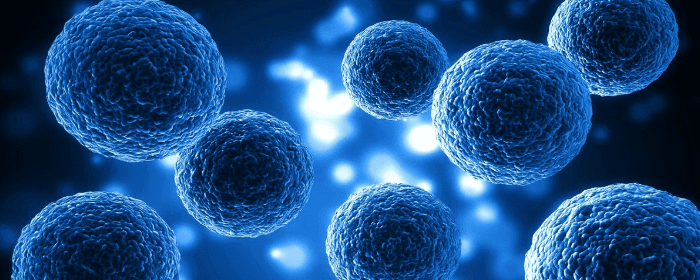
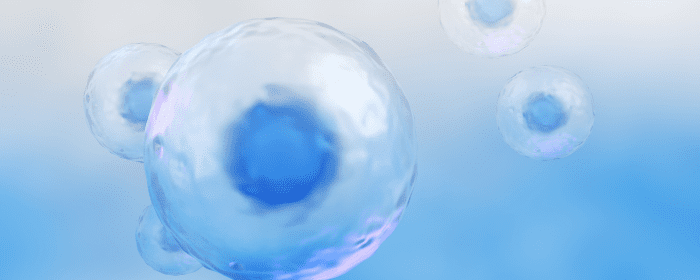
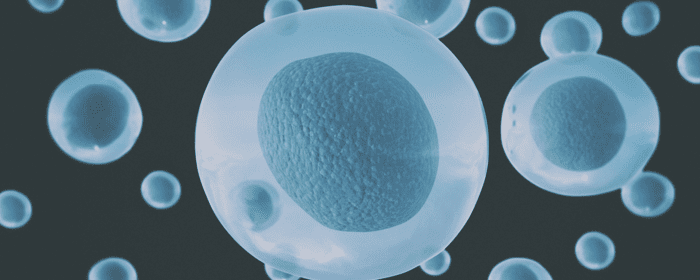
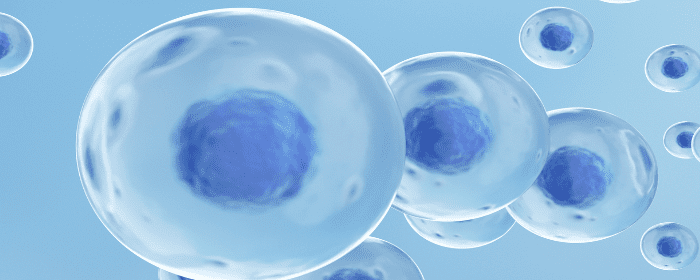
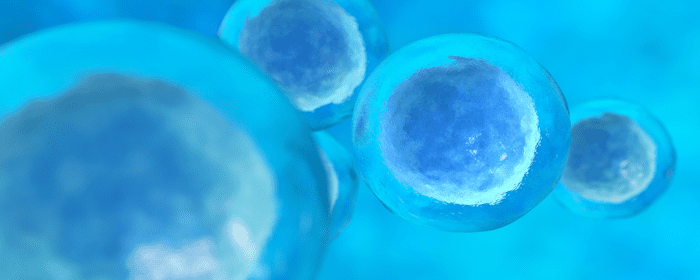
 St. Petersburg, Florida
St. Petersburg, Florida
